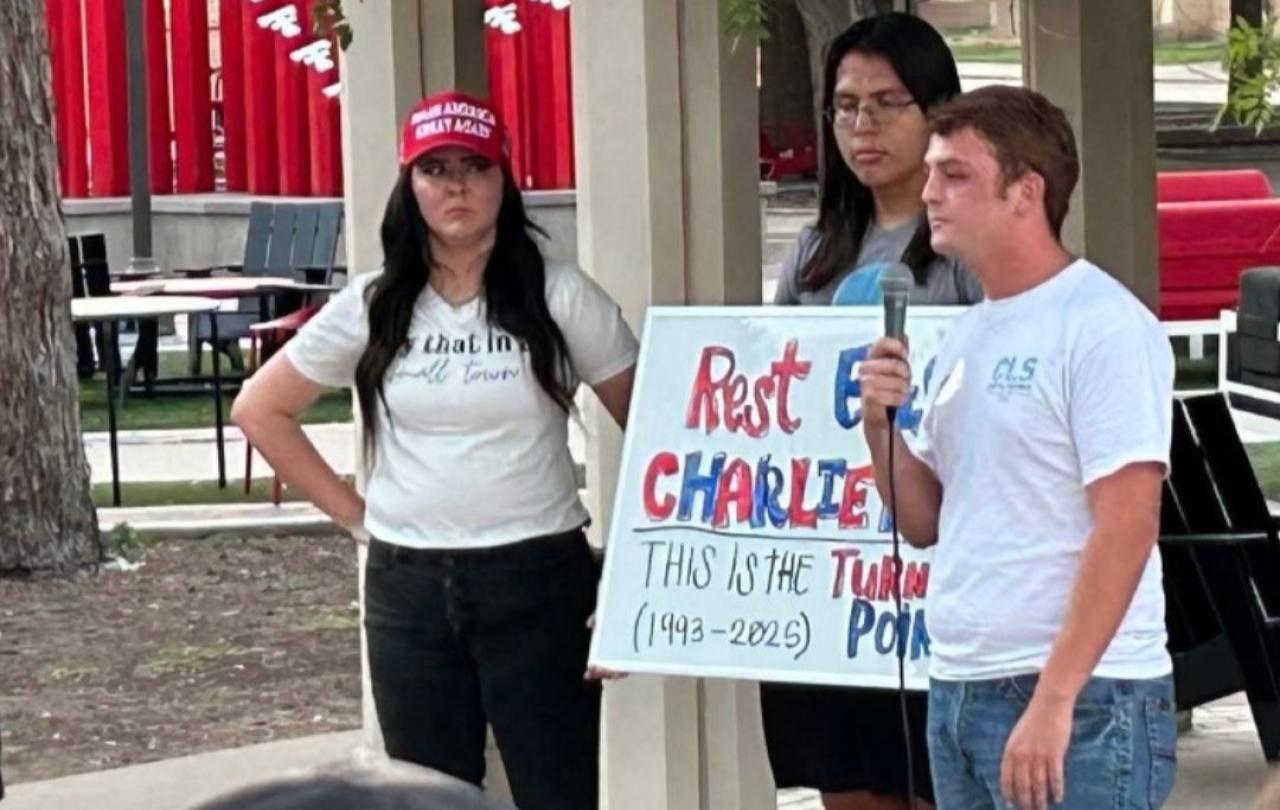
Unless you've managed to avoid all news this week, you’ll have heard of a series of unconnected violent attacks in the United States, the most recent being the assassination of 31-year-old conservative political activist Charlie Kirk during a speaking engagement at a university in Utah.
Every time there is a shooting in my country – whatever the motives – I become physically sick and had a similar reaction this week. I cannot watch the news; I delete social media and avoid the topic in conversation as much as possible. Our present and public culture of violence coupled with the resultant news cycle is simply too much, too fear-inducing, and leaves one with the helpless thought of, “what would happen if I was in a situation like this?” I’m sure I’m not alone in this response.
I do not agree with Kirk’s politics (though as an ordained minister, I wouldn’t tell you if I did), yet what I can tell you is that his death has gripped me in a way I couldn’t have foreseen, nor expected, becoming strikingly close to home. Kirk was 31 with a three- and one-year-old child. I am 32 with a three- and one-year-old. The idea that this could happen, period, followed by the thought of a prospect of never seeing my own children grow up completely undoes me.
This is undoubtedly a common response to when tragedy strikes individuals with whom we can readily identify. I doubt I have to list examples (were you 37 years old when Princess Diana died?; etc). because you’re probably thinking of certain instances right now in times where tragedy has hit, even metaphorically, quite close to home.
As I write this not from a gun control perspective, nor a political one at all, what is the theological answer to why events like this continue to happen? It is a question that I have been asked, unprovoked, by three young fathers (of diverse political persuasion) this week who have been gripped similarly to me.
What continues to come to mind is a blanket statement written by the Apostle Paul in his first century letter to the Galatian churches in which he calls the backdrop of our lives, “This present evil age.” It is a harsh statement, and it is unpleasant, but I also think it is true. How, you ask, can I apply this first century statement to 21st century life?
For one, Paul is writing about the time before Jesus Christ returns, a time that Christian teaching states that we presently occupy, so the statement does apply. But perhaps more importantly, when I look around, I confess that, especially in weeks like this one, “this present evil age” is an existence that I recognize. It is an existence that tragically we can largely expect, an existence that cannot be fixed politically, personally, or corporately as much as we would like to.
Rather than depressingly stripping us of agency, how is this helpful? I find it helpful in two key ways: First, this present evil age as a descriptor is helpful because it helps answer, “Why?” to my despondency, confusion, and nausea at senseless tragedy. It helps me put those feelings somewhere and begins to, if only slightly, give the nonsensical a name.
More than that, though, it forces me to look beyond this world, and to a power greater than the seen forces here – a power that I cannot see, a power that is good, merciful, and just, a power that will one day, and hopefully soon, make all things new.
Of course, we cannot make sense of senseless and violent and sickening tragedy. We weren’t meant to, and that is grievous. So might we only call on the name of the one who has come to this present evil age before, and that he might come again – soon.
Support Seen & Unseen
Since Spring 2023, our readers have enjoyed over 1,500 articles. All for free.
This is made possible through the generosity of our amazing community of supporters.
If you enjoy Seen & Unseen, would you consider making a gift towards our work?
Do so by joining Behind The Seen. Alongside other benefits, you’ll receive an extra fortnightly email from me sharing my reading and reflections on the ideas that are shaping our times.
Graham Tomlin
Editor-in-Chief





